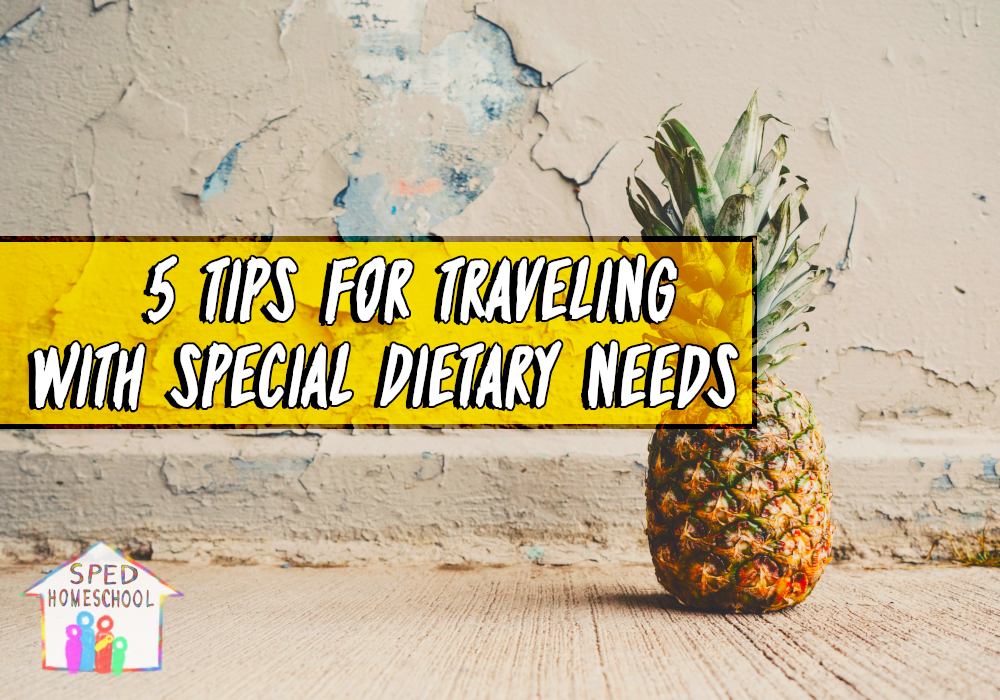
When one member of the family receives a dietary diagnosis, the whole family shares in the diagnosis. Eating affects almost everything, and typically normal things become a trial. Special events and traveling require special considerations.
A few years ago I received a diagnosis of some serious and complicated food sensitivities and allergies. We traveled on long car trips to see family yearly, as well as other vacations and didn’t want to stop just because of my diagnosis. But things had to change. Here are the 5 things we did differently that not only helped with food and dietary issues but also helped our budget!
1. Bring ready prepared homemade meals
We have a cooler and laundry basket that holds our groceries in the car. I even cook meals ahead of time and freeze them so all I do is thaw and reheat when we arrive at our destination.
I have a list of items we need to buy once we arrive and have already scouted out grocery stores near our lodging. For example: I cook and freeze chili, then I buy the chips and cheese when we arrive.
2. Pack to-go meals for the road
Not stopping for meals while driving is the biggest budget saver! I bring a loaf of bread, knife, paper towels, peanut butter, and jelly. Sometimes I throw in a jar of cookie butter too! I make sandwiches and pass them out with fruit and chips; we don’t even have to stop!
Our goal is to eat two meals in the car and only stop for one. Not only is it the cheapest way to travel, it’s also much healthier than fast food. Other food that is easy to eat in the car:
- individual hummus cups and veggies
- cereal bowls with milk that doesn’t need refrigeration (yes, it exists!)
- cheese, crackers, and pepperoni
- anything you would put in a school lunch (granola bars, chips, fruit snacks, etc.)
3. Plan driving routes around food breaks
When someone has food allergies, restaurants are tricky to navigate. At one point there were only a few restaurants I trusted, and even then it was only one or two of their options.
I found driving routes based on restaurants I could safely eat at, and we planned our stops accordingly so at least one meal a day could be in a restaurant. Many places also have call ahead ordering, so we could grab it and get back on the road.
4. Book condos or houses
Many extended stay hotels, condos, timeshares, and houses (VRBO – vacation rent-by-owner) have kitchens. If you cook instead of eating out, the higher lodging cost is negated by lower dining expenses.
On the flipside, this alternative makes it feel like less of a vacation for me, so one or two nights the kids or my husband take over the cooking so I get a break! We eat out one nice meal, and sometimes it’s just my husband and me on a date while the kids hang back and watch movies!
5. Cook in the hotel
For conferences and occasions when we don’t find lodging with a kitchen, I bring a crockpot or my beloved Instant Pot and cook in the room! I do try to cook less aromatic foods to be sensitive to the other guests! Most hotels now have refrigerators in the rooms. If not, you can call ahead of time. Many have one they can add to your room or can give you access to one on the property, especially if you inform them of a medical necessity.
Even though my dietary diagnosis has once again changed, and I no longer have the restrictions I did, we still use these tips when we travel. It’s a way of life for us now, and it is much healthier than eating so many meals out. The amount we save allows us to travel more! It IS possible to have an incredible vacation even with special dietary needs!

